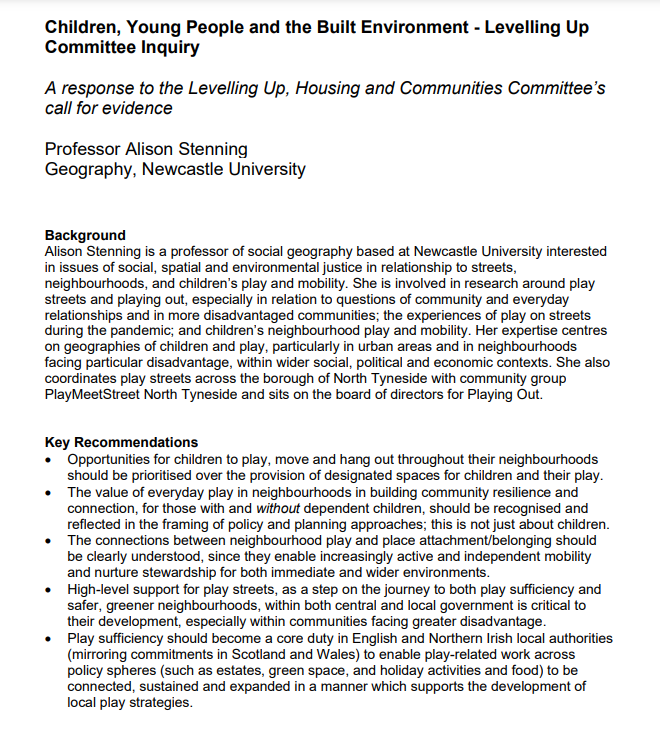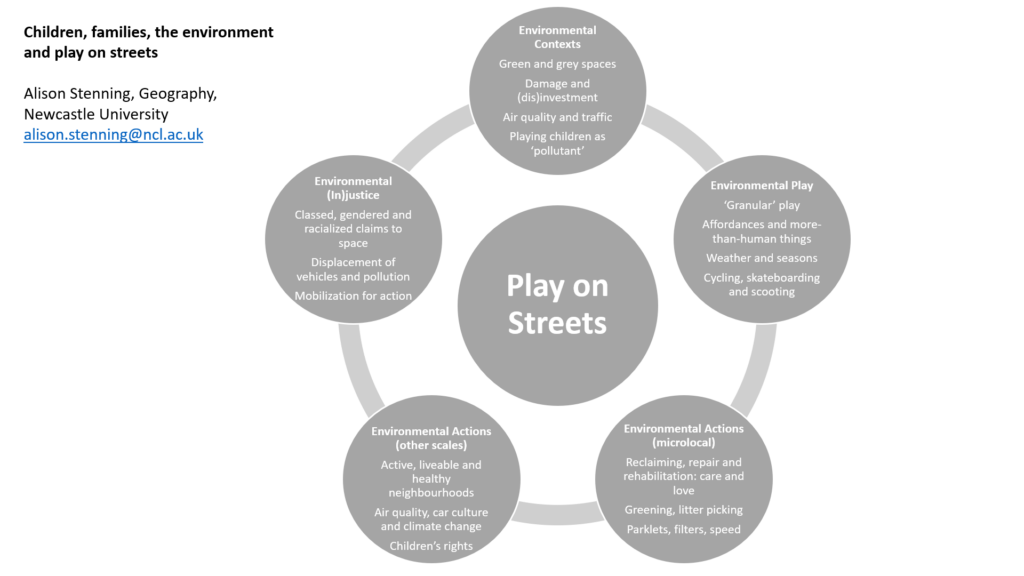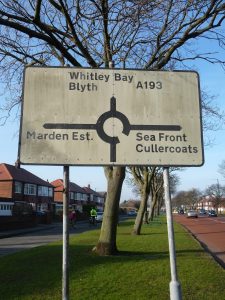At this week’s Child in the City international seminar, I was paying particular attention to thinking about the links between play, space and community in the city, in the context of my developing research on street play and everyday relationships (see also an earlier blog post here). At various points, ideas that connected to the street as a place for play and for relationships emerged and I want to try to pull some of those together here.
Firstly, for children, as Adrian Voce made clear in his introduction, building on the work of Stuart Lester and Wendy Russell, play is seen to be a critical space through which they get to know, engage with and become attached to the spaces and relationships of their everyday lives, as they play with the environmental affordances (such as playgrounds and open spaces, but also kerbs, car parks, walls, and so on), and move between their homes and those of their friends. In these ways, play can be seen as a key catalyst for the relationships that develop between children and their homes and communities.
Secondly, and relatedly, as Ben Tawil and Mike Barclay of Ludicology argued, children primarily want to play in the public spaces near their homes, the streets, pavements, walls, car parks; this is their clear preference over other, perhaps even better-equipped, spaces, even just a few dozen metres from their front doors. It seems that children’s is to be in and play in their most proximate spaces, where they can see and meet other local children. We might ask if this preference reflects convenience – it’s simply easier to play out close to their homes – or something more profound about familiarity and security, and about making play an embedded part of their everyday lives.
What these two claims also make me question is, what about adults? How might we think about adults, play and streets? So, we might ask if we can think about how adults play on their streets, or at the very least how they engage in playful activities on their streets, such as chatting, socialising, joking, laughing, and drinking. And if so, do they also have a preference, acknowledged or unacknowledged, for proximity? And if they do, is their preference about convenience or about something else, perhaps echoing their children’s – and even their own childhood memories of – hope for engagement, attachment and belonging through play on and around their streets?
A further theme, raised by architect Dinah Bornat, is that children are the generators of community. Children’s everyday play can animate streets as they occupy pavements, gardens and driveways, and move between each other’s homes. Children playing out can draw adults out, as they watch, talk to, and care for their children. Where children play, adults meet and communities are potentially created and strengthened. In this sense, we might think about how children’s play creates spaces and relationships in which adults can also be playful. Sukanya Krishnamurthy talked about how parents in Eindhoven in the Netherlands wanted services for adults around play spaces – such as benches, cafes, shelters – that might enable turning watching children play into a more collective, sociable, even playful experience for adults too.
Finally, as Ellen Weaver, lawyer and legal researcher, suggested, adults seem to have more confidence in their children playing out when they know that their children know, recognise and relate to other adults as their parents’ friends – or play-mates – and therefore might themselves feel confident asking someone else’s parent, or another neighbour, for help if they fall over or lose a ball under a car, for example.
In all these ways, play seems to work as interaction and integration, for children and adults. Moreover, adults’ and children’s playful relationships appear to be symbiotic, reinforcing each other and reinforcing the potential for residents of all ages to build relationships in their streets. Interestingly, however, during the seminar two playing out activists explicitly stated that they were surprised by the animation and transformation of their communities through street play, that they did not plan for or anticipate these changes. By contrast, I both hoped for and expected this – it was, for me, an equal goal to that of creating a playful space for my daughter and her friends on the street, in the hope that a playful atmosphere would transform our relationships with each other as neighbours and with the street, that play would be a catalyst for adults to develop greater familiarity with and stronger attachments to their everyday environments and relationships too, and it is this that lies at the heart of my research and of my part in the launch of Play.Meet.Street North Tyneside (which is explicitly about playing and meeting).
In thinking about all of these questions, I’m working with the ideas of Donald Winnicott, a paediatrician and psychoanalyst who was profoundly engaged in ideas about space, play and everyday relationships. Winnicott believed play to be vital for those of all ages, seeing adult play – in art, creativity, humour, conversation – as equally important as children’s play in creating a liveable life. He also saw an innate connection between play and relationships, through the idea of potential space, which he saw as a space between people – children and adults – that is playful, safe, trustful, and creative, and, critically, founded on an idea of a relationship to real and imagined others, who can witness, join in, celebrate, remember and enjoy the play and creativity.
Together these debates raise the following questions for my research:
- What do parents hope for, for themselves, consciously or otherwise, as they plan to create playful spaces on their streets for their children?
- What, if anything, is important about play? Why are parents choosing to create spaces of play, rather than any other forms of community interaction (such as The Big Lunch, or litter picking, though these are clearly not mutually exclusive)? Does play create a potential space, following Donald Winnicott, for the creation of meaningful everyday relationships?
- Does street play generate community for children and adults? How is this felt and valued by adults and children?






